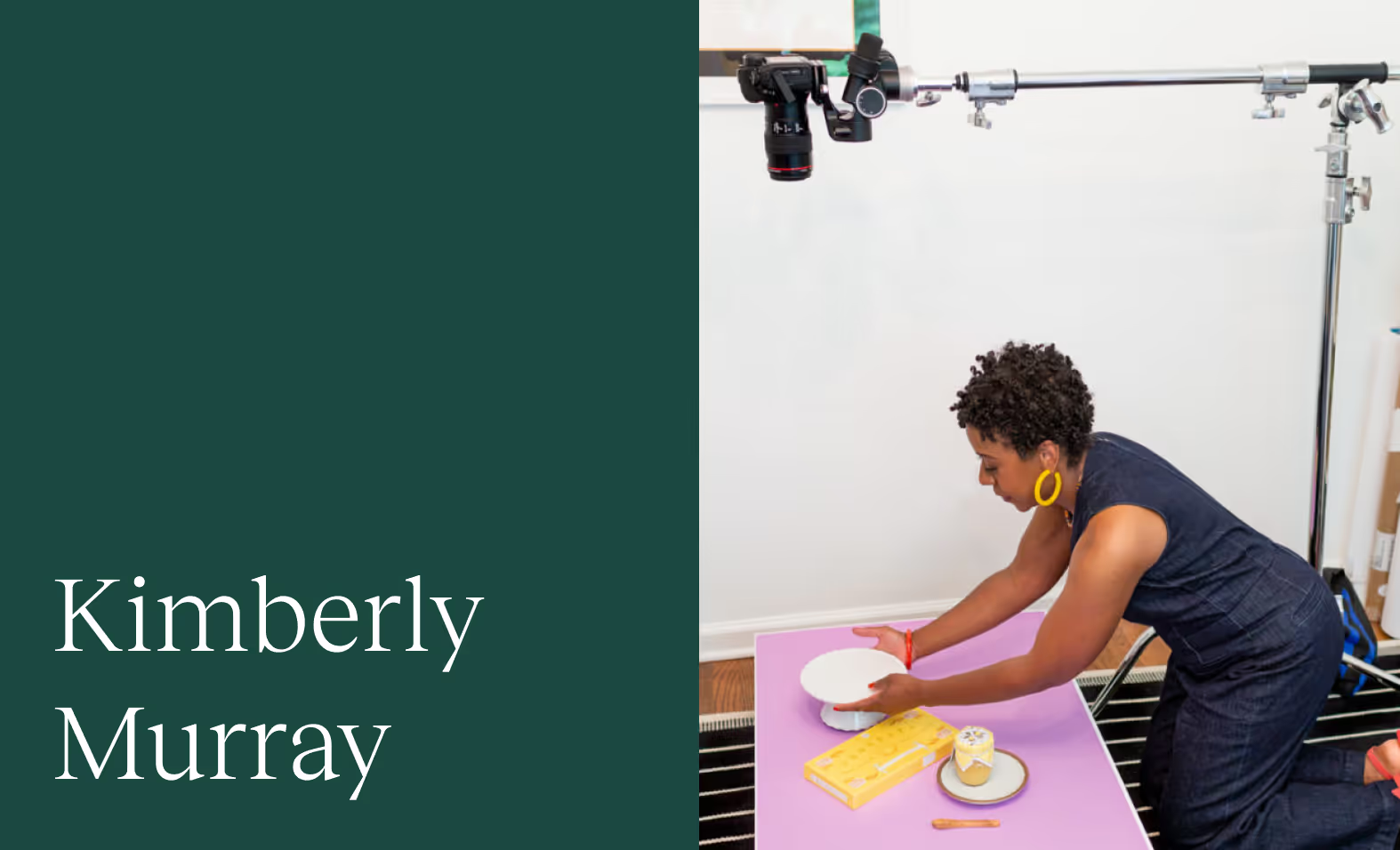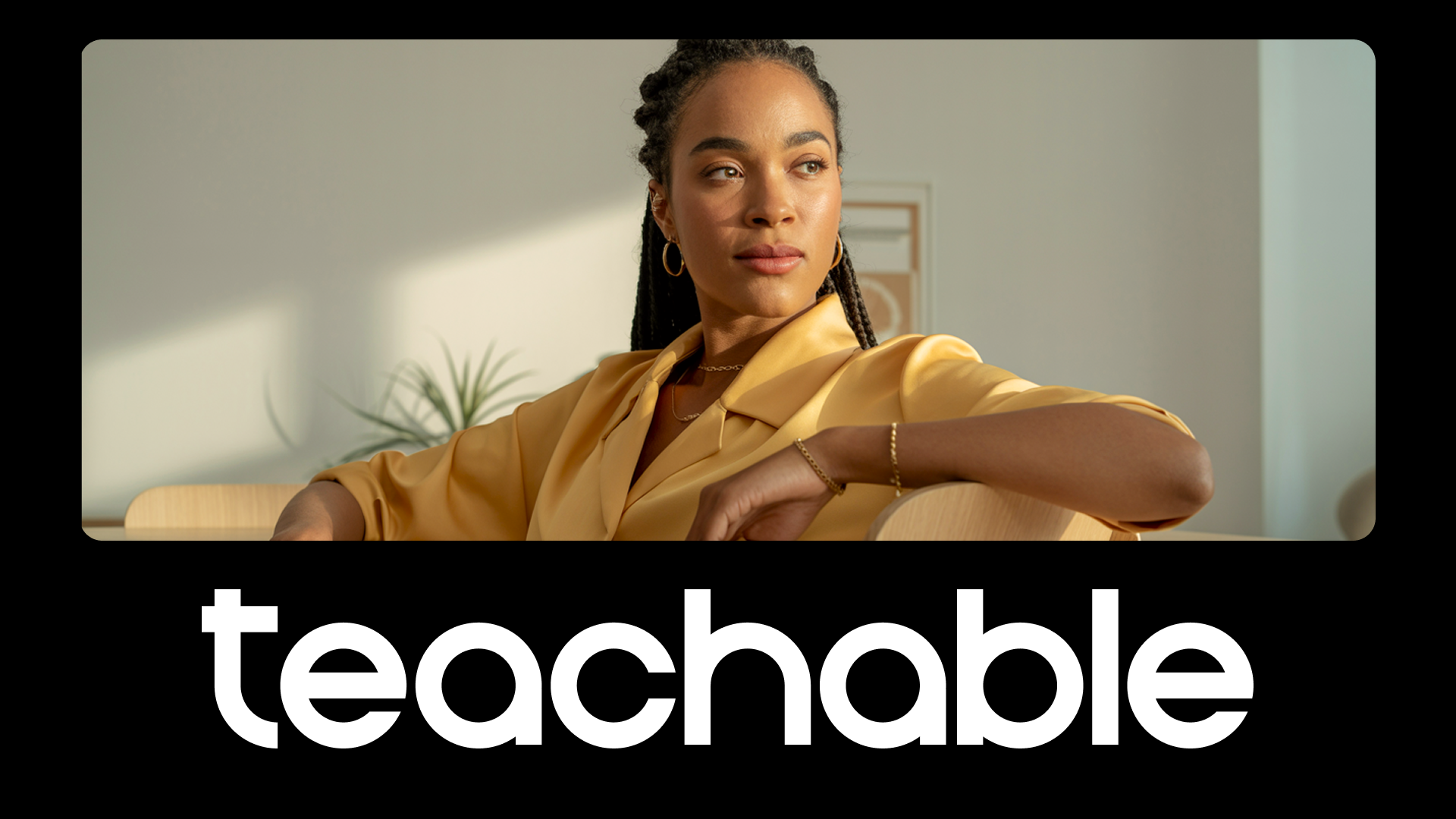Photographer and teacher Kimberly Murray knew there was a demand for her expertise in flat lay photography. She’d experienced it with her in-person workshops. But she needed to find a better way to reach a broader audience than just through her popular Instagram. Enter her profitable online business, Flat Lay Play. With this, she used her Instagram expertise to expand her niche online courses.

“While blogging and sharing useful content on Instagram has the potential to be far-reaching, teaching an online course allows me to dive deeper into the topics,” she notes.
To better understand how she tapped into this niche for her online course, we spoke with Murray to get her insight and best tips.
What were your biggest hurdles starting out with launching your online business?
“There were several hurdles—e.g., streamlining my message, dealing with technological glitches while recording the modules, putting boundaries around the scope of the course, but I would have to say that the biggest hurdle was an internal struggle. That being, getting over the fear of selling. These days, it seems like everyone is trying to sell something, and I didn’t want to come across as too ‘sales-y.’ But, a mentor told me that I’m just educating people about my offerings; it is their decision to buy or not.”
For many first time creators, the fear of having a topic that’s too “niche” to succeed is very real. Since your topic is rather unique and caters to a very specific student group, was this fear something that ever crossed your mind?
“In my course Flat Lay Play, I teach flat lay photography, which is somewhat of a niche for online courses. Early on, I feared having enough students to make course creation worth my time. While flat lays have broad appeal and visibility in both social media and print, I wondered if people saw the need to learn how to style flat lays themselves, especially with the proliferation of styled stock sites with ready-made flat lay images for purchase.

Although I had that fear, I knew that the interest to learn how to create custom flat lay images was there from inquiries I kept receiving to conduct workshops or deliver one-on-one mentoring.
Plus, I’ve had the wonderful opportunity to speak in person at a few conferences, and several of the sessions sold out. That helped me to feel confident that there was a solid group of people who were interested in the topic. I just needed to get clear on my target audience (photographers and content creators) and fight the urge to pitch the course to any and everyone. Once I did that, I was able to tailor my message and create a lead magnet that catered to that specific group.”
When you have a unique skillset to share, finding your audience is key. How did you find success locating and catering to your student base?
“Prior to launching Flat Lay Play, I started sharing flat lay images on Instagram regularly and created a hashtag (#kmpstyled) that became a hub, or portfolio, if you will, for my flat lay images. Alongside that, I started adding tips to my captions instead of just posting pretty pictures. Doing so started to establish me as an authority on flat lay photography, and people started engaging with me more around my content. They said that they loved having actionable tips and the ability to peek inside my creative process.
In addition, I created a free Essential Flat Lay Tool Kit designed to get content creators up and running with flat lay photography with as little or as much gear as their budget and interest allowed. I market both the course and tool kit when I speak at conferences as well as online, which helps me to attract even more students.
But, while it is important to find your audience, what is most important is nurturing the people who support you, no matter how large that group is. They will become your biggest cheerleaders and best spokespersons.”
If another independent business owner were to come up to you and ask you for your top three tips for carving out your own space in an online marketplace, what would you advise them?
- “Stay true to your passion and what genuinely inspires you. You will need to rely on that in the moments when you are struggling to come up with new content, are tired, or are wondering if your efforts will even pay off in the end.”
- “’Keep your eyes on your own paper.’ It is easy to get distracted by what those around you are doing and be tempted to follow their path. Trust yourself and keep striving to be a better version of yourself versus a better version of your competitor. You have an audience for a reason. They want to hear your voice.”
- “Stay singularly focused. As creatives, we often have many ideas and directions in which we want to go. However, if you want to carve out a niche for your online course, stay focused on one thing and work to learn everything you can about that topic. Anticipate the questions and problems that your target audience faces, and provide the solution. Soon, you will become known for your topic, and people will seek you out for your unique expertise.”
{{todolist-component="/blog-shortcodes/blog-popup"}}

How has being a part of the Teachable community helped you and your business?
“The path to online course creation was daunting! Even though I had a solid command of my topic, the learning curve was steep when it came to learning best practices for building and marketing my first online course. The Teachable community has been invaluable. At times, some of the other course creators have asked questions that I did not even think to ask. The questions themselves, not to mention the responses from the Teachable community leaders and other course creators, have sparked other ideas about how I might want to structure my course or add other resources that might benefit my students.”
All images courtesy Kimberly Murray
Join more than 150,000 creators who use Teachable to make a real impact and earn a real income.


.png)



.png)

